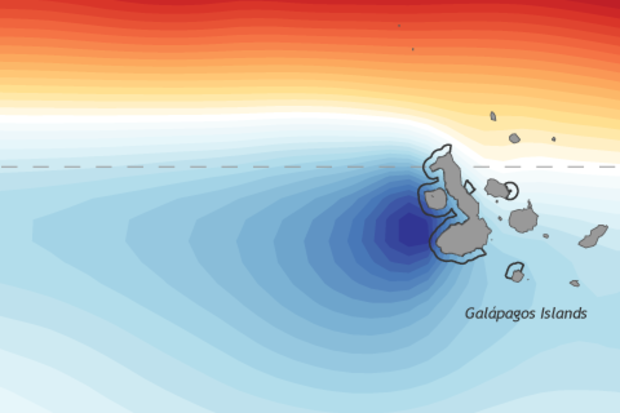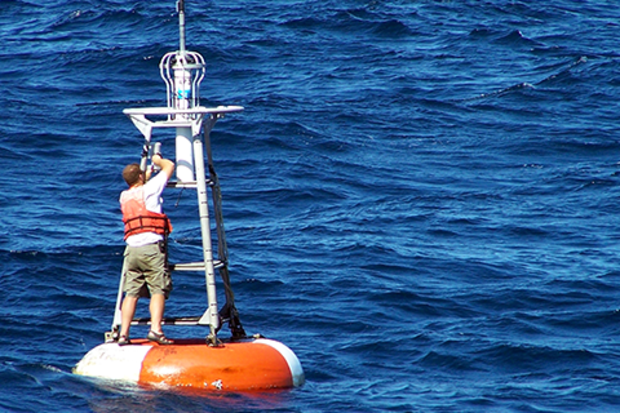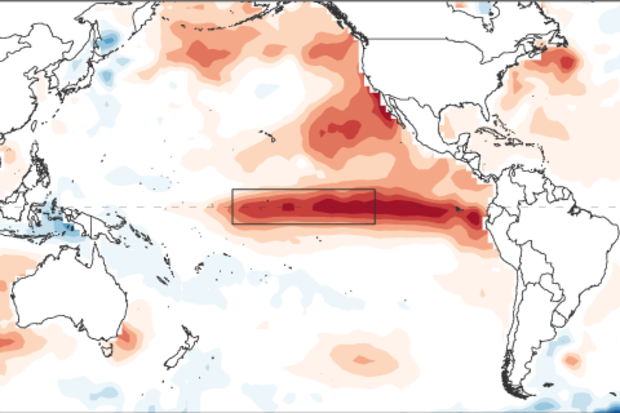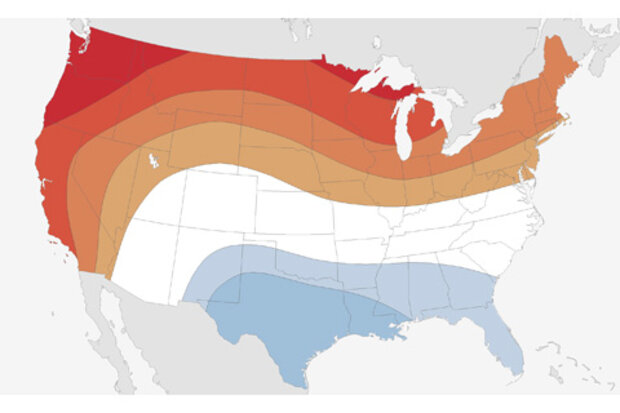ENSO Blog
If you’ve been following the development of this El Niño, you may have heard in the media that sea surface temperatures in the central equatorial Pacific are at near-record highs. Are we seeing the most powerful El Niño ever?
Remember: ENSO is not all about the ocean
El Niño is one phase of the El Niño-Southern Oscillation (ENSO). An ENSO event involves changes in both the sea surface temperatures and in the overlying atmosphere across the tropical Pacific. In the case of El Niño, sea surface temperatures are warmer than average, and the Walker Circulation, which operates like a vertical loop through the tropical Pacific atmosphere—is weakened. This weakness shows up as more clouds and…
Read article
This is a guest post by Prof. Kris Karnauskas of the University of Colorado Boulder. He runs the Oceans and Climate Lab (@OceansClimateCU), which aims to improve the understanding the tropical ocean and atmosphere, its interaction with ecosystems, and how it has changed in the past and will change in the future. In his spare time we hear he runs ultra-marathons, which is simultaneously very cool and kind of crazy.
What happens when a tiny island rises from the seafloor and stands directly in the path of one of the grandest ocean currents in the world? This happened millions of years ago, when the Galapagos Archipelago formed. We now have penguins in the tropics and such a remarkable biolo…
Read article
As Emily has painstakingly documented at the beginning of every month for what seems like an eternity, we have an El Niño event on our hands. And if you’ve read her posts religiously (which of course you have, because they are awesome), you already know that one way Emily shows the strength of El Niño is via the sea surface temperature (SST) anomalies in a region of the Pacific Ocean called the Niño3.4 region.
You may also have noticed that when we talk about how one event compares to another, we usually say something like, “Depending on what dataset you use….” Up until now, though we’ve haven’t talked much about how exactly we determine which sea surface temperature dataset to use to det…
Read article
The peak of our current El Niño is expected to occur in the next month or so… but what does that mean? We measure El Niño events by how much warmer the surface waters in a specific region of the equatorial Pacific are, compared to their long-term average. The difference from average is known as the “anomaly,” and we use the average anomaly in the Niño3.4 region as our primary index for El Niño. When the index in this region is at its highest, we have our peak El Niño.
However, El Niño-related impacts have been occurring around the globe for months already, and will continue for several months after the warmest temperatures occur in the tropical Pacific Ocean. For example, du…
Read article
Four years of drought in California. Back-to-back cold and snowy winters over the Midwest and Northeast, while balmy in the West. What’s next, thunder, hail, or maybe locusts and frogs? Or will this winter bring more “normal” winter weather? Actually thunder and hail isn’t too far-fetched this winter, at least in the Southeast, but more about that later. The jury’s still out on the locusts and frogs. So what can we expect this winter?
Since this post is appearing on the ENSO blog, readers are well aware that El Niño developed last spring and is currently among the strongest events on record back to 1950. In addition, previous posts have discussed how El Niño can impact the weather and…
Read article




